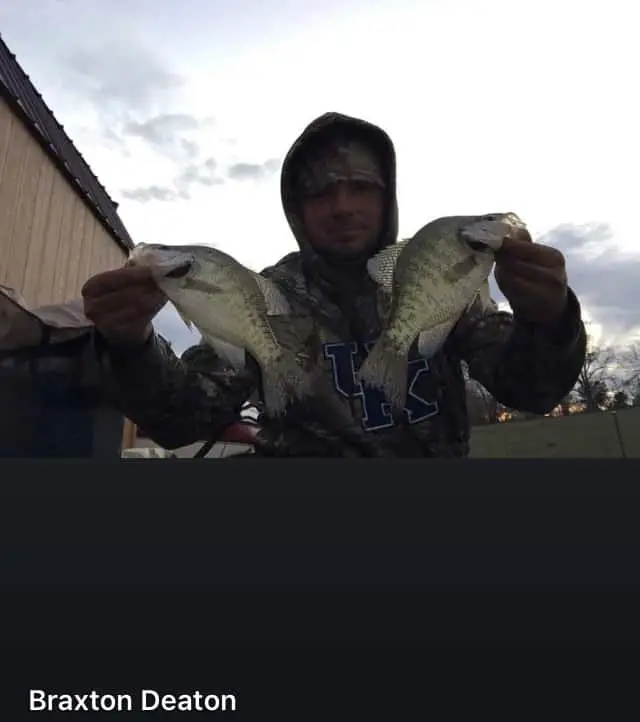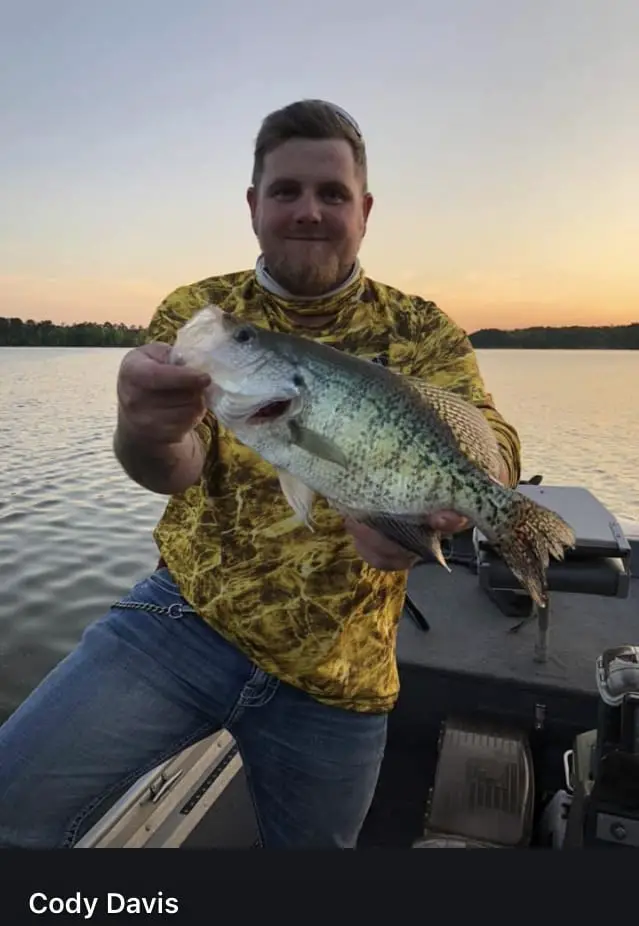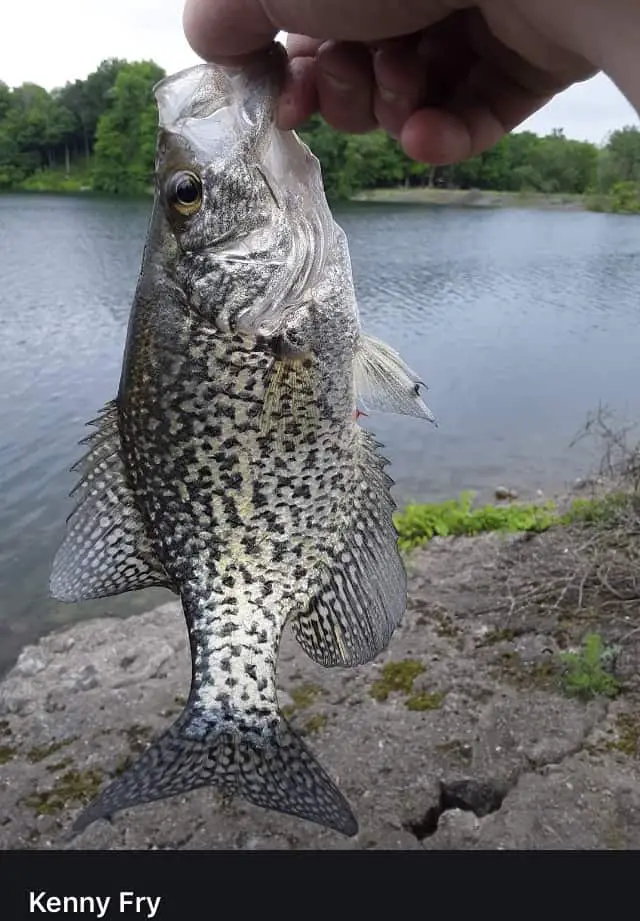Yes, crappie have been classified as an invasive fish. This is because crappie multiply quickly and can migrate to far regions. Crappie are known to eat smaller fish, worms, minnows, water insects, and crustaceans. Any invasive species are said to cause an imbalance in the fish population.

Crappies continue to be in high demand, even though they have invasive tendencies. They are found in many lakes and rivers across the United States and Canada. Game and fish departments are not concerned with the crappie population because of the high demand for them. In fact, anglers catch thousands of them each fishing season.
Be sure to visit my resources page for recommended gear- Click Here
With the invasive nature of the crappie, it is not recommended to grow them or have them in your pond or fishing hole. They multiply very quickly and will feed on aquatic organisms. This is only 1 of the reasons that crappie should not be in your pond.
“Just as in cooking there’s no such thing as a little garlic,
in fishing there’s no such thing as a little drag,” H.G. Tapply.
There are 4 other reasons why crappie are not good for ponds or fishing holes.
1. There is a danger of malnutrition
2. Reproductive capacity
3. Crappie feed on other fish
4. Heavy Rainfall
The danger of malnutrition is because crappie is a very competitive fish when it comes to their food. If they are stocked in a small pond, they are unable to look for food when needed. This will cause illness and possible disease in the crappie. If you have smaller fish in your pond, the crappie will prey on them to survive.
Crappie reproduce extremely fast. For instance, you can stock your pond with white crappie with all intentions of keeping the population low.
But it will not take long for your pond to be overrun with crappie because of the quick reproduction rate! Crappies thrive in larger bodies of water where there is plenty of space and food.
If you would like to find a way to make some money by fishing and writing about it or making videos about it like I am doing here, check out the guys that can teach you how to do it here.
“I have fished through fishless days that I remember
happily without regret,” Roderick Haig Brown
As stated above, crappie will feed on smaller fish in your pond. That would limit you to only stocking crappie. A normal practice is to stock minnow, bass and crappie in ponds, but there is not always a desirable outcome.
Having a pond stocked with crappie is a bad idea if you live anywhere that has heavy rainfall in the spring or autumn months. The heavy rains will overflow your pond and your crappie will be lost. If you insist on stocking a pond with crappie then make sure you have appropriate land space.
If you are stocking and raising crappie for slabs, to sell for money, you will need to add a couple average sized bass. The bass will feed on the smaller crappie and allow the larger ones to grow and survive.

If you are still considering adding the invasive crappie to your pond or building a pond on your land to raise crappie, here are a few more pros, cons, and tips. First off, it is suggested that you need about 15 acres to have a thriving crappie pond.
But opinions vary, so make sure you talk to a fish expert and or a construction/landscaping company. Second, crappie will need additional nourishment because of pond conditions. You must feed them the proper food for your manmade pond to succeed.
“There he stands, draped in more equipment than a
telephone lineman, trying to outwit an organism
with a brain no bigger than a breadcrumb,
and getting licked in the process,” Paul O’Neil.
Make sure the water in the pond is clear enough for the crappie to see their food. If it is murky or muddy, they cannot see their prey. Visibility should be at least 24 feet deep. You will also need to beware of any extra algae growing in your pond. This will hinder the ability for the crappie to see their food. Another thing that is critical for crappie survival is plants. Crappie like to hide between and behind roots and plants, so keep a variety along the shoreline of your pond.
According to the Oklahoma Department of Wildlife Conservation, you must keep bass stocked with the crappie. This reduces the number of young crappies and prevents overpopulation. You want to have, according to other anglers and studies, 50 10-12-inch bass per acre. If you insist on having a good pond with crappie then it is recommended to use hybrid crappie or a mixture of both white and black crappie.
“Most fishermen swiftly learn that it’s
a pretty good rule never to show a favorite
spot to any fisherman you wouldn’t trust with
your wife,” John Voelker
While researching a company who builds ponds, we came across their professional opinion on putting crappie in your pond.
Successful crappie ponds are over 5 acres with abundant brush piles and numerous largemouth bass that weigh under 1 pound. Black crappie produces less eggs when white crappie, so you can stock your fishing pond with them, but they are recommended for a small pond.
Here is the link to Aquatic Biologists INC.

Hybrid crappie are a better alternative for your pond. They will require periodic restocking but are more manageable than black crappie. The ideal mix of hybrid crappie is 63 per ¼ acre compared to only 38 black crappies per ¼ acre.
You are going to want to mix in 25 largemouth bass per ¼ acre. This gives you the perfect balance for crappie to survive.
You will also need to make sure that you have fertile soil for your crappie pond. If you do not have fertile soil, then you should consider a hybrid bream pond or a catfish pond because the crappie pond will not be productive.
So, we have established that crappie is an invasive fish and that they travel to faraway regions. We also learned that crappie is invasive because they reproduce so quickly.
Having crappie in your fishing hole or your pond is not really a good idea, but it is doable if you follow the suggestions that we have given you throughout the article.
“I am firmly convinced that the ideal combination
leading to a happy life is to have the time to both
fish and read,” Brian Murphy
Making sure they have plenty of clearwater to find their prey, stocking with largemouth bass to keep the full-size crappie healthy and growing and keeping an eye on the algae so that the pond doesn’t get over murky.
Fishing for crappie is fun whether you do it in a lake, a river, or your personal pond. Just be careful with how you build your crappie pond so that they have a great chance of survival and less malnutrition and disease, which will affect any other fish that you have in the pond with the crappie.

